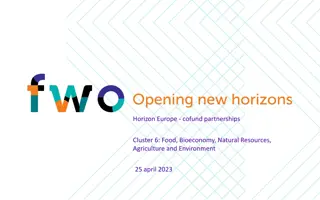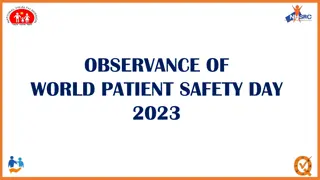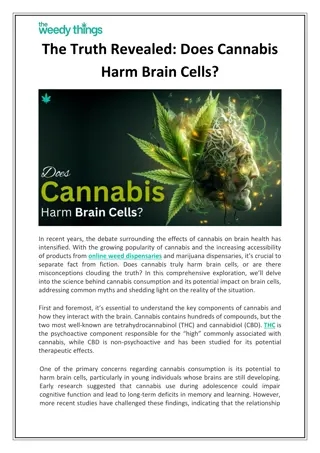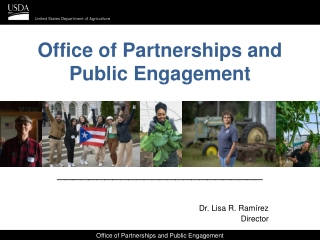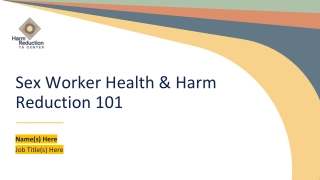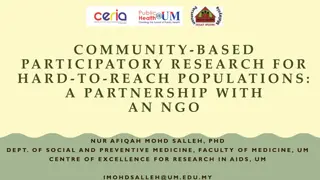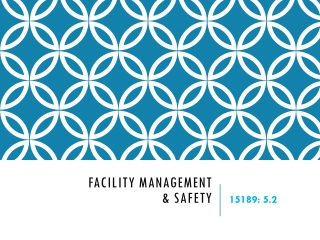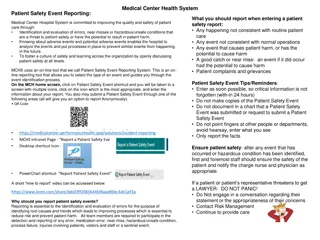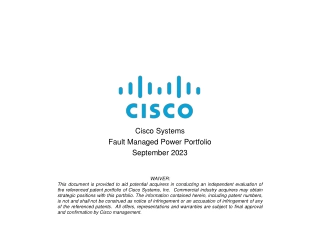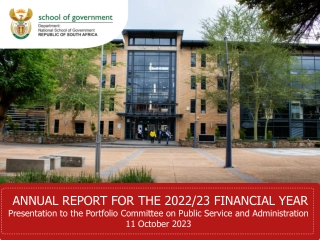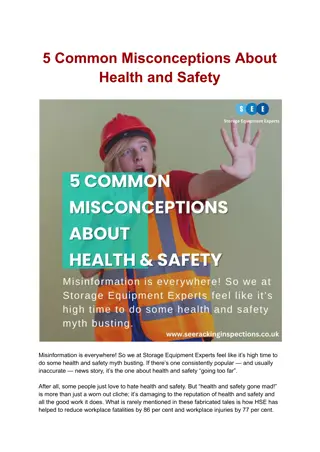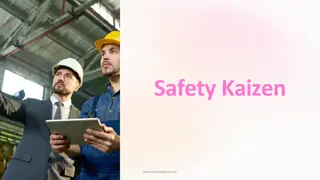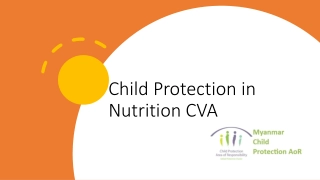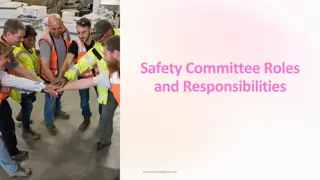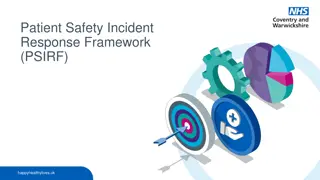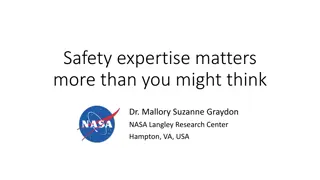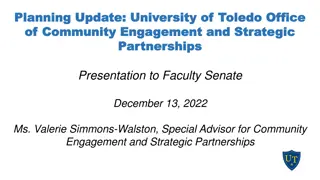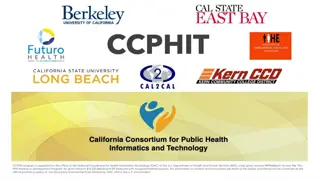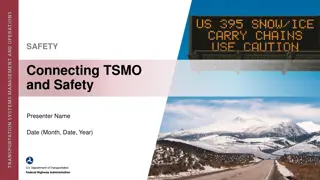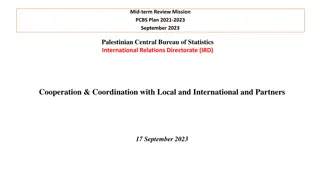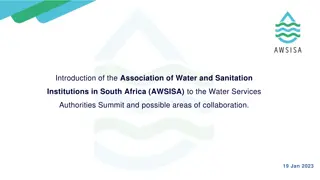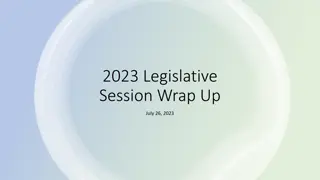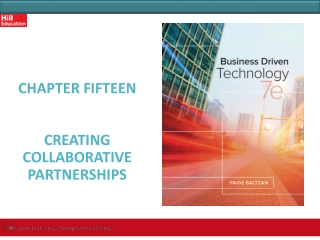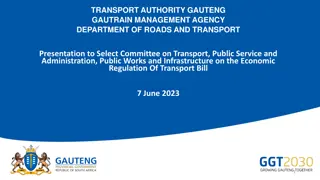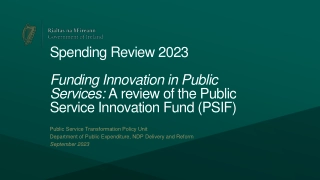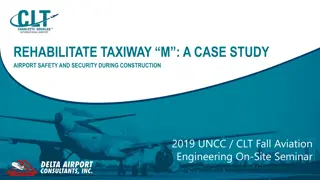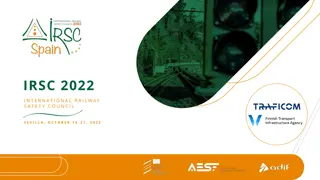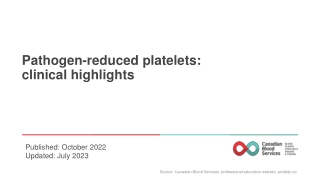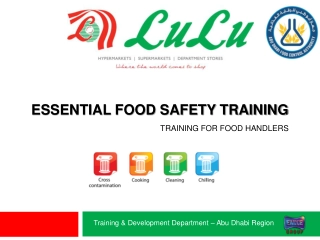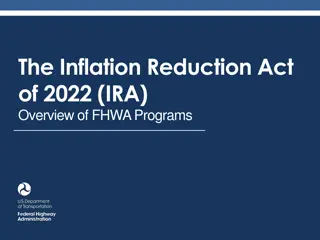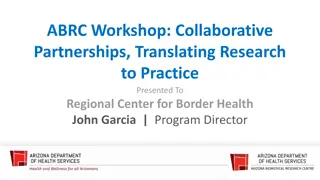The Power of Collaboration in Harm Reduction and Public Safety Partnerships
Learn about successful collaborations in harm reduction and public safety to prevent overdose, featuring insights from various presenters and an overview of pilot projects supported by the National Council and CDC. The webinar emphasizes evidence-based strategies, integration of harm reduction and public safety initiatives, and the goal of reducing overdose risk for individuals with substance use disorders.
The Power of Collaboration in Harm Reduction and Public Safety Partnerships
PowerPoint presentation about 'The Power of Collaboration in Harm Reduction and Public Safety Partnerships'. This presentation describes the topic on Learn about successful collaborations in harm reduction and public safety to prevent overdose, featuring insights from various presenters and an overview of pilot projects supported by the National Council and CDC. The webinar emphasizes evidence-based strategies, integration of harm reduction and public safety initiatives, and the goal of reducing overdose risk for individuals with substance use disorders.. Download this presentation absolutely free.
Presentation Transcript
The Power of Collaboration: Success Stories of Harm Reduction and Public Safety Partnerships to Prevent Overdose Thursday, November 9th, 2023| 3:00 4:30 pm ET
Housekeeping You will be muted automatically upon entry and for the duration of the webinar. This webinar is being recorded and will be archived for future viewing on the National Council s website. Please submit your questions using the Q&A box at the bottom of the screen.
Frequently Asked Questions This webinar will be recorded and will be made available to view on demand, along with a copy of these slides, within 3 days following the event s conclusion. This webinar is not CEU accredited. There will not be a certificate of completion for attending this webinar. However, if you would like proof of attendance for your employer, please email WSloyer@thenationalcouncil.org and we would be happy to provide you with an email verification.
Todays Presenters Deputy Chief of Police Jeffrey Filzek Caroline Davidson Director, National Council for Mental Wellbeing Dunya Barash Director of Operations, Families Against Narcotics Judge Linda Davis Madison Heights Police Department Families Against Narcotics and Joel Cohen Consultant with the National Council for Mental Wellbeing as Panel Moderator Neil Calmjoy, LICSW Program Manager, Catholic Community Services of Western Washington Carolina Hershey, CPC Prevention Case Manager/ Certified Peer Counselor, Catholic Community Services of Western Washington Teal Gardner Crisis Response Unit Lead, Olympia Police Department
Project Overview The National Council for Mental Wellbeing (National Council), with support from the Centers for Disease Control and Prevention (CDC), invited organizations to apply for grant funding to support one-year pilot projects integrating harm reduction strategies and public safety initiatives. Pilot Project Goals: 1) Support the implementation and enhancement of evidence-based or promising strategies to prevent and reduce overdose and other drug-related harms through collaborations with public safety(e.g., naloxone and fentanyl test strip (FTS) distribution and linkages to primary care, mental health care, evidence- based treatment for SUDs and other support services). 2) Integrate harm reduction strategies and public safety initiatives to prevent and reduce overdose risk and other harms for people who use drugs (PWUD) and people with substance use disorders (PWSUD). This project is supported by the Centers for Disease Control and Prevention (CDC) of the U.S. Department of Health and Human Services (HHS) as part of a financial assistance award totaling $1,000,000 with 100% funded by CDC/HHS. The contents are those of the author(s) and do not necessarily represent the official views of, nor an endorsement by, CDC/HHS or the U.S. Government.
Agenda Background Background Overview and history of harm reduction Historic areas of tension between harm reduction and public safety Panelist presentations Panelist presentations Panelist discussion and Q&A Panelist discussion and Q&A Actionable takeaways Actionable takeaways Lessons learned and recommendations from panelists Preview of upcoming resources from the National Council
Background Harm Reduction Basics and the Intersections of Harm Reduction and Public Safety
Tackling Fatal Overdose and Substance Use Disorder Prevention Recovery Support Treatment Harm Reduction
Harm Reduction Meeting people where they re at, but not leaving them there Meeting people where they re at, but not leaving them there Recognizing that change is a process and helping people in their journey along that process without judgment Harm reduction is a set of practical strategies and ideas aimed at reducing negative consequences associated with drug use. a movement for social justice built on a belief in, and respect for, the rights of people who use drugs. In particular, harm reduction emphasizes kindness engagement of people who use drugs. engagement of people who use drugs. kindness and autonomy autonomy in the Sources: National Harm Reduction Coalition. 2019. Principles of Harm Reduction. Harmreduction.org. https://harmreduction.org/about-us/principles- of-harm-reduction/. Substance Abuse and Mental Health Services Administration. 2023. Harm Reduction. https://www.samhsa.gov/find-help/harm-reduction
Pillars of Harm Reduction Harm reduction Harm reduction 1. Is guided by people who use drugs (PWUD) people who use drugs (PWUD) and with lived experience lived experience of drug use 2. Embraces the inherent value of people inherent value of people 3. Commits to deep community engagement deep community engagement and community building 4. Promotes equity equity, rights rights, and reparative social justice reparative social justice 5. Offers lowest barrier access lowest barrier access and non non- -coercive support coercive support 6. Focuses on any positive change any positive change, as defined by the person Want to know more? Substance Abuse and Mental Health Services Administration. 2023. Harm Reduction Framework. https://www.samhsa.gov/sites/default/files/harm-reduction- framework.pdf
Examples of harm reduction practices include peer support peer support programs programs risk reduction education risk reduction education bridge programs (low barrier linkage bridge programs (low barrier linkage to treatment and/or medication) to treatment and/or medication) syringe exchange/ syringe exchange/ distribution distribution housing housing- -first programs first programs wound care wound care non non- -punitive approach punitive approach to return to use to return to use fentanyl test strips fentanyl test strips naloxone distribution naloxone distribution safe consumption spaces safe consumption spaces navigation services navigation services methadone and methadone and buprenorphine* buprenorphine* testing and prevention for infectious testing and prevention for infectious disease (such as HIV and viral hepatitis) disease (such as HIV and viral hepatitis)
Ultimately Harm reduction can encompass many different pieces. Harm reduction can encompass many different pieces. These grant projects were focused specifically on These grant projects were focused specifically on overdose prevention prevention and and risk reduction related to substance use risk reduction related to substance use, , which will largely be the focus of this presentation. which will largely be the focus of this presentation. overdose
Harm Reduction (Mini) History From In the Works
Areas of Tension Between Harm Reduction and Public Safety Collective stigma may lead to public viewing substance use or substance use disorder as an issue that should be tackled by public safety (rather than a systemic need) Harm reduction services that help people who use drugs (PWUD) may be illegal or not completely legal Public safety are generally available 24 hours a day, and may therefore be a measure of last resort to address social challenges Policies have historically penalized PWUD, so interactions with public safety may be colored by this historic pattern PWUD may have had previous negative experiences with public safety, which could contribute to their or their peers tensions Public safety may be frustrated with what they see as revolving door PWUD who deal with consequences of substance use and then choose to use again
Comeback Quick Response Team (QRT) Families Against Narcotics (FAN) Dunya Barash Judge Linda Davis Deputy Chief of Police Jeffrey Filzek
Arrest and Jail Alternatives (AJA) Catholic Community Services of Western Washington Neil Calmjoy, LICSW Carolina Hershey, CPC
Program Overview Arrest & Jail Alternatives works with Public Safety partners to engage justice-impacted individuals in case management to reduce recidivism. Individuals referred are often at the intersection of homelessness, substance use disorder, and unmet behavioral health needs. Participants work with Peer Case Managers who utilize their training and lived experience to build rapport and assist with navigating complex systems.
Partnership with Public Safety Referral Criteria- frequent, high utilizers of First Response entities with MH/SUD needs. AJA Case Managers assist at point of contact when arrest is imminent in order to de- escalate or divert arrest. Collaborate with for additional insight around encounters, behavior, BOLOs, other notable information. Work with courts and jails to provide peer counseling during incarceration and advocacy during legal proceedings.
Implementing Harm Reduction Peer Case Managers assist participants in connecting to low barrier housing, medical & mental health services, and MAT services. Also connect participants with recovery goals around access to MAT, syringe services, Naloxone, and other resources. AJA s work is applied through the belief that being justice impacted is an inherently harmful and traumatic experience to the community we serve.
AJAs Prevention Program In 2023, the National Council funded an AJA subprogram focused on prevention assisting individuals further upstream, prior to falling into chronic homelessness and behavioral health crisis. Referral Criteria housed with unmet substance use or behavior health needs, increased contact with Public Safety, possible risk of losing housing. AJA provides short term and intensive case management to assist with stability, strong systems advocacy, and overall reduction in emergency calls.
Panelist Discussion & Q&A and Joel Cohen Consultant with the National Council for Mental Wellbeing as Moderator Deputy Chief of Police Jeffrey Filzek Dunya Barash Director of Operations, Families Against Narcotics Judge Linda Davis Madison Heights Police Department Families Against Narcotics Please submit your questions using the Q&A box at the bottom of the screen. Teal Gardner Crisis Response Unit Lead, Olympia Police Department Carolina Hershey, CPC Prevention Case Manager/ Certified Peer Counselor, Catholic Community Services of Western Washington Neil Calmjoy, LICSW Program Manager, Catholic Community Services of Western Washington
Thank You! Caroline Davidson National Council for Mental Wellbeing Dunya Barash Families Against Narcotics Judge Linda Davis Families Against Narcotics https://www.surveymonkey.com/r/BYNNVVQ Deputy Chief of Police Jeffrey Filzek Madison Heights Police Department Neil Calmjoy, LICSW Catholic Community Services of Western Washington Carolina Hershey Catholic Community Services of Western Washington Teal Gardner Olympia Police Department Joel Cohen Consultant with the National Council for Mental Wellbeing
Why Harm Reduction? Quality of life benefits Quality of life benefits Harm reduction can: Reduce stigma Reduce stigma associated with substance use and co- occurring disorders. Promote a philosophy of hope and healing Promote a philosophy of hope and healing by employing people with living and lived experience in leadership and in the planning, implementation, and evaluation of services. People with lived experience can also model meaningful change change for their peers. model meaningful Build community and increase protective factors Build community and increase protective factors for people who use drugs and their families. Encourage client autonomy. Encourage client autonomy. Source: Substance Abuse and Mental Health Services Administration. 2023. Harm Reduction Framework. https://www.samhsa.gov/sites/default/files/harm-reduction-framework.pdf
Why Harm Reduction? Physical health benefits Physical health benefits Harm reduction programs have been associated with: Reducing the risk of spreading infections related to substance use1 (in particular, HIV and hepatitis C2) Increasing referrals to substance use disorder (SUD) treatment3,4 Reducing hospital visits5 1. Wilson, D. P., Donald, B., Shattock, A. J., Wilson, D., & Fraser-Hurt, N. (2015). The cost-effectiveness of harm reduction. International Journal of Drug Policy, 26 Suppl 1:S5-11. doi:10.1016/j.drugpo.2014.11.007 Puzhko, S., Eisenberg, M. J., Filion, K. B., et al. (2022). Effectiveness of interventions for prevention of common infections among opioid users: A systematic review of systematic reviews. Frontiers in Public Health, 2022;10:749033. doi:10.3389/fpubh.2022.749033 Strathdee, S., & Vlahov, D. (2001). The effectiveness of needle exchange programs: A review of the science and policy. AIDScience. 2001:1 Surratt, H. L., Otachi, J. K., Williams ,T., Gulley, J., Lockard, A. S., & Rains, R. (2020). Motivation to change and treatment participation among syringe service program utilizers in rural Kentucky. Journal of Rural Health,2020; 36(2):224-233. doi:10.1111/jrh.12388 Coye, A. E., Bornstein, K. J., Bartholomew, T.S., et al. (2021). Hospital costs of injection drug use in Florida. Clinical Infectious Diseases 2021;72(3):499-502. doi:10.1093/cid/ciaa823 2. 3. 4. 5.
Why Harm Reduction? System benefits System benefits Harm reduction programs have also been shown to: Be cost effective by resulting in fewer instances of infectious disease, ambulance calls, emergency department visits, hospital stays and overdose death.6-9 Advance health equity and have the potential to address racial disparities.10 6. Ijioma, S. C,. Pontinha, V. M., Holdford, D. A., & Carroll, N. V. (2021). Cost-effectiveness of syringe service programs, medications for opioid use disorder, and combination programs in hepatitis C harm reduction among opioid injection drug users: A public payer perspective using a decision tree. Journal of Managed Care and Specialty Pharmacology. 2021;27(2):137-146. doi:10.18553/jmcp.2021.27.2.137 Cousien, A., Tran, V. C., Deuffic-Burban, S., et al. (2018). Effectiveness and cost-effectiveness of interventions targeting harm reduction and chronic hepatitis C cascade of care in people who inject drugs: The case of France. Journal of Viral Hepatitis. 2018;25(10):1197-1207. doi:10.1111/jvh.12919 Ritter, A., & Cameron, J. (2006). A review of the efficacy and effectiveness of harm reduction strategies for alcohol, tobacco and illicit drugs. Drug and Alcohol Review. 2006;25(6):611-624. doi:10.1080/09595230600944529 Pollack, H. A. (2001). Cost-effectiveness of harm reduction in preventing hepatitis C among injection drug users. Medical Decision Making. 2001;21(5):357-367. doi:10.1177/0272989X0102100502 Vearrier, L. (2019). The value of harm reduction for injection drug use: A clinical and public health ethics analysis. Disease-a-Month. 2019;65(5):119- 141. doi:10.1016/j.disamonth.2018.12.002 7. 8. 9. 10.
Ultimately You can t help someone recover if they re not alive. You can t help someone recover if they re not alive.
Emerging Trends in Harm Reduction Spread of safe consumption spaces Decriminalization of fentanyl test strips Naloxone approval for over-the-counter purchase Widespread naloxone availability (in schools and beyond) Increase in medication accessibility (telehealth expansion, mobile units, updated limits on prescribing) Adapted strategies for emerging drugs Novel partnerships Increase in housing-first programs Intentionally incorporating peer work into non-peer spaces


